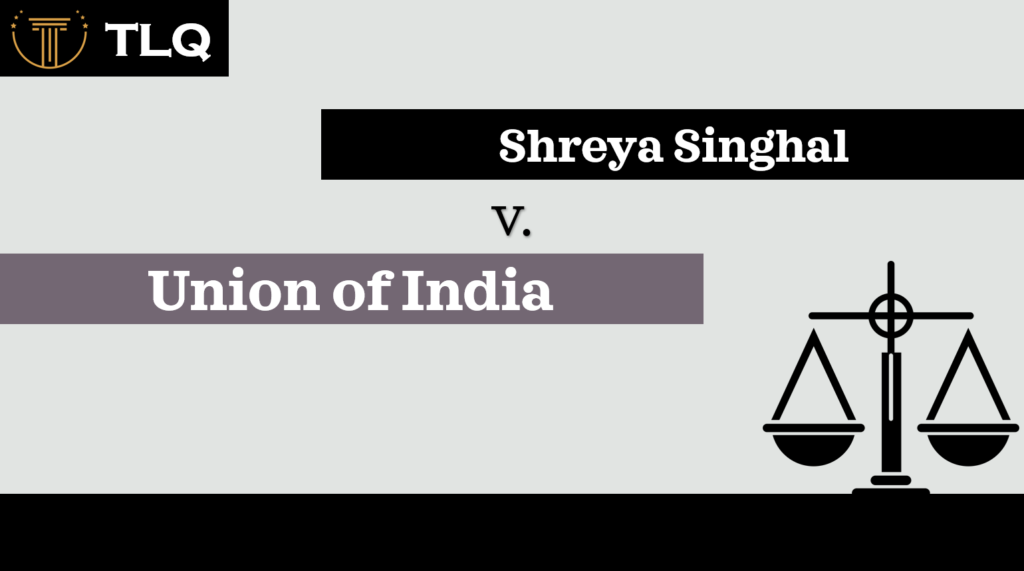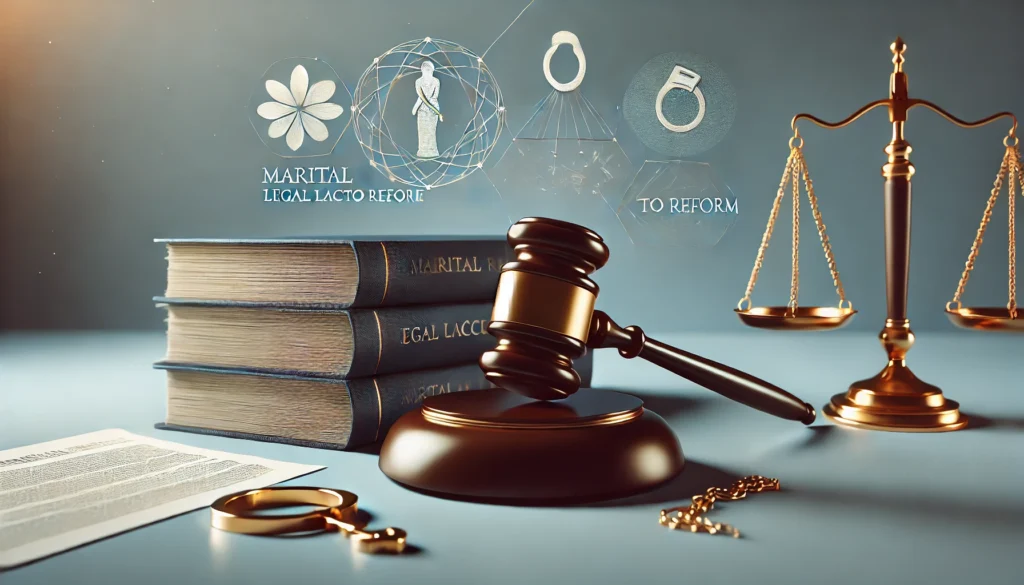Published On: 22nd August, 2024
IRAC Method
- Shreya Singhal vs Union of India
- Supreme Court of India
- Dated – 24 March 2015
- Citation – AIR 2015 SC 1523
- Bench – Two-judge bench of Justice J. Chelameswar and Justice R.F. Nariman
INTRODUCTION
¶The case was brought against Section 66A[1] of the Information Technology Act, 2000, which made it a crime to send offensive messages via computers or communication devices. Shreya Singhal, the petitioner, argued that this law was unclear, too broad, and violated the fundamental right to free speech guaranteed by the Indian Constitution. The case also addressed key issues about the limits of free speech in the digital age and how to balance individual rights with government regulation online.[2]
FACTS OF THE CASE
¶In the year 2012, two girls named Shaheen Dhada and Rinu Srinivasan found themselves in trouble with the Mumbai police. The reason is that they had shared their thoughts against a bandh (strike) that occurred after the demise of Shiv Sena leader Bal Thackeray Facebook. These girls were later set free, and all charges against them were dismissed. However, their arrests led to protests erupting across the nation. People strongly believed that the police had gone overboard by invoking Section 66A, a move that violated the fundamental right to express one’s opinions freely. This particular section allowed law enforcement to detain or probe individuals without a warrant for offenses under the Information Technology Act.
¶The aftermath of this incident resulted in numerous high-profile arrests where individuals were taken into custody for simply sharing their views which the government deemed “inappropriate,” even though these opinions were merely differing political stances. Responding to mounting pressure, the central government took action in January 2013 by stipulating that no one should be detained under Section 66A unless authorized by a senior police officer beforehand.
¶This case is a legal document filed as a writ petition under Article 32[3] of the Indian Constitution, seeking to declare Section 66A of the IT Act, 2000 as unconstitutional as it blatantly contradicts Article 19(1)(a)[4] guaranteeing freedom of speech. The objective was to prevent any further misuse of Section 66A following the detention of two young women in Mumbai over their social media posts. Multiple writ petitions were submitted challenging the validity of Section 66A and other aspects of the IT Act, 2000. It is worth noting that Section 66A was not an original component of the IT Act, of 2000; it was added later through an amendment aimed at addressing evolving cybercrimes facilitated by advancements in technology such as disseminating explicit content, data breaches, online frauds, and transmission of offensive messages via mass communication platforms. This section detailed punishments for three categories of cyber offenses.
Supreme Court of India
ISSUES INVOLVED
- Does Section 66A of the IT Act violate the freedom of speech and expression guaranteed by Article 19(1)(a) of the Indian Constitution?
- Is Section 66A of the IT Act vague and overly broad, making it liable to be struck down?
- Does Section 66A create a chilling effect on free speech?
- Are the terms “grossly offensive” and “menacing character” used in Section 66A unclear and uncertain?
- Is Section 66A a reasonable restriction on the right to free speech and expression?
ANALYSIS
Judges Chelameswar and Nariman shared the ruling of the Indian Supreme Court.
¶As a limitation to this liberty, Article 19(2) allows the government to enforce “reasonable restrictions . . . in the interests of sovereignty and integrity, security, friendly relations with foreign States, public, decency or morality, or in relation to contempt of court, defamation or incitement to an offense.”
¶The Petitioners contended that Section 66A was unconstitutional because its intended protection against annoyance, inconvenience, danger, obstruction, insult, injury, criminal intimidation, or ill will did not align with Article 19(2). They also argued that the law was too vague as it did not precisely define its prohibitions. Moreover, they claimed that the law had a stifling effect on freedom of expression. In contrast, the government asserted that the legislature was best suited to meet the people’s needs and that courts should intervene in legislative processes only when a statute violated citizens’ rights under the Constitution. The government argued that just because a provision was abused did not justify deeming it unconstitutional. Additionally, they believed that loose language should not render a law invalid if it was legislatively competent and non-arbitrary.
¶The Court delved into three core concepts regarding freedom of expression: discussion, advocacy, and incitement. The Court emphasized that mere discussion or advocacy is fundamental to this right and limitations are acceptable only when it amounts to incitement. Analyzing Section 66A for its impact on Internet communications revealed it could curb various forms of communication without distinguishing between harmless discussions or incitement causing public disorder. Concerning defamation protection through online discourse, the Court concluded that Section 66A failed to tackle true defamation issues while condemning offensive statements causing annoyance or inconvenience but having no reputational impact. Addressing vagueness concerns by following U.S. judicial precedents led to finding Section 66A void due to undefined terms resulting in arbitrary enforcement.[5]
¶Moreover, because terms like inconvenience or annoyance were ill-defined in Section 66A, it risked stifling protected speech under freedom of expression. Recognizing differences between internet information sharing and traditional speech justified separate offenses for online communications without violating constitutional non-discrimination provisions. While refraining from procedural unreasonableness discussions due to substantive unconstitutionality findings led to declaring Section 66A completely invalid for violating freedom of expression rights under Article 19(1)(a) of the Constitution.
CONCLUSION
¶The legal case of Shreya Singhal vs Union of India was a significant ruling in Indian constitutional law. It highlighted the crucial role of freedom of speech and expression in a democratic society.
¶In its judgment, the court deemed Section 66A of the IT Act as unconstitutional. This move provided individuals with greater security to express their views and ideas online without the threat of legal action. Furthermore, the case underscored the importance of striking a balance between free speech and aiding individuals from hate speech, cyberbullying, and other forms of online harassment. This landmark decision established a firm precedent for future legal matters concerning online free speech. It remains a valuable point of reference for constitutional experts and scholars in India.
Reference(s):
[1] Information Technology Act, 2000, No. 21, Acts of Parliament, 2000 (India).
[2] Writing Law (last visited 12 July 2024) < https://www.writinglaw.com/shreya-singhal-vs-union-of-india/#:~:text=Shreya%20Singhal%20vs%20Union%20of%20India%20is%20a%20landmark%20judgment,and%20expression%20on%20the%20Internet.>
[3] INDIA CONST. art. 32
[4] INDIA CONST. art. 19, cl 1
[5] Abhinav K Shukla, TSCLD (last visited 12 July 2024)< https://www.tscld.com/shreya-singhal-v-union-of-india-a-critical-analysis>



